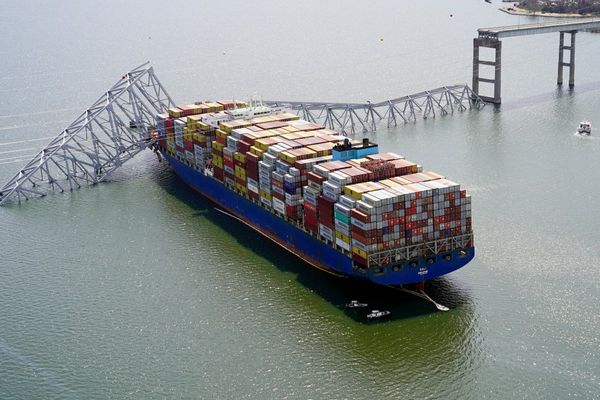
More than 70 public schools in the ACT were closed on Monday after the consumer regulator recalled several children’s sand products because they could contain asbestos.
Last week, the Australian Competition and Consumer Commission (ACCC) issued a recall for several products sold at leading Australian retailers including Officeworks, which also made its own decision to recall additional products.
On Sunday, the ACCC recalled a different range of children’s sand sold at Kmart and Target and said laboratory testing had detected asbestos in some samples. This prompted more school closures, including in Tasmania and New Zealand.
How did this happen? And how worried should parents be?
What products have been recalled?
On 12 November the ACCC published a recall from supplier Educational Colours of its 1.3kg versions of Kadink Sand and Educational Colours – Rainbow Sand, as well as the 1kg packages of Creatistics – Coloured Sand products.
Additionally, Officeworks recalled KD Plain Sand (1.3kg), KD Magic Sand (2kg) in natural and purple, and Kadink six-piece decorative sand.
On Sunday, the ACCC issued another recall, for Kmart Australia’s Active Sandtub 14 piece Sand Castle Building Set, sold at both Kmart and Target, and Magic Sand tubs in blue, green and pink, that were only sold at Kmart.
Government officials have said they are monitoring the evolving situation. The Asbestos and Silica Safety and Eradication Agency (Assea) said it could not rule out the possibility that similar products were contaminated.
The agency said the government would inform people if asbestos was found in other products and that importers should be taking steps to identify any potential risk.
What is the risk to children?
Asbestos, which has been banned in Australia since 2003, is a hazardous material that can cause terminal diseases if its crystalline fibres are breathed in.
However, the official advice is that the risk to children exposed to any of the colourful sand products is very low.
The ACCC on Sunday said respirable – or airborne – asbestos had not been detected in any of the tested samples, meaning the products are unlikely to release asbestos fibres fine enough to be inhaled even if they are contaminated.
Prof Dino Pisaniello, from the University of Adelaide’s School of Public Health, agreed the size of any asbestos particles in the sand was unlikely to be fine enough to be inhaled deeply into the lungs.
“The airborne concentrations in actual use would be extremely low – below the limit of detection by normal means,” he said. “All of this gives considerable confidence in the risk being extremely low.”
Where have the products come from?
Officeworks has said the Kadink, Educational Colours and Creatists sand products were made in China. The ACCC has said the Kmart and Magic Sand products were also manufactured in China. Asbestos is still produced and used in China, so the products are likely to have been contaminated at some point during the manufacturing process.
How has this happened?
Asbestos is not allowed to be imported into Australia except in very limited circumstances.
However, Associate Prof Anthony Linton, from the Asbestos and Dust Diseases Research Institute, said the protocols designed to prevent the toxic material from entering Australia may not be able to stop it entirely.
“Such is the production of asbestos around the world there will always be the danger that even in the best system things can slip through the cracks,” Linton said.
A spokesperson for the Australian Border Force (ABF) said it had strict requirements in place for high-risk goods. Goods must be tested by an accredited laboratory in their country of origin or in Australia, and a test certificate supplied to border officials.
However, the coloured sand products may not fall into the high-risk category, meaning there isn’t the same testing obligations. For many lower-risk goods, the ABF considers mandatory testing to be inefficient and costly to industry.
Guardian Australia asked the ABF to clarify whether the recalled sand products and others like them were considered high or low risk, but the agency did not respond by deadline.
The ABF has said it is working with other federal government agencies, including the ASSEA, to determine if any changes to customs protocols are required.
Why have some schools closed and not others?
Across the country, 74 schools have been closed for assessment and cleaning, including 72 public schools in the ACT, one independent school in Queensland and another independent school in Tasmania.
On Monday evening, Catholic Education Tasmania confirmed six schools would be fully closed from Tuesday “until further notice” and a further three would be partially closed to undertake removal, testing and cleaning of potential asbestos materials.
The ACT has confirmed 42 public schools will reopen on Tuesday.
A spokesperson for the Queensland education department on Monday said they did not anticipate closing any public schools this week but were “working closely with all state schools that may be impacted”.
The New South Wales, South Australia and Western Australia education departments said they had advised schools on the removal process for the recalled products if they were on site.
The ACCC has instructed consumers to wear gloves, masks and disposable coveralls and put sand products in a heavy-duty plastic bag, double tape it securely and store it away from children, before disposing of it in an authorised facility.
The Northern Territory, Tasmanian and Victorian education departments were contacted for comment.







